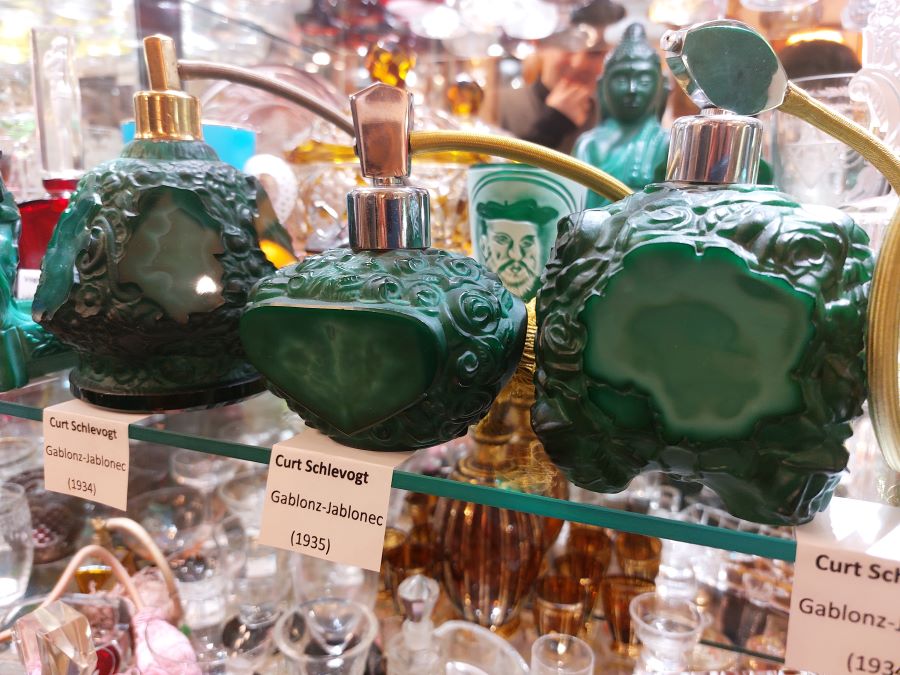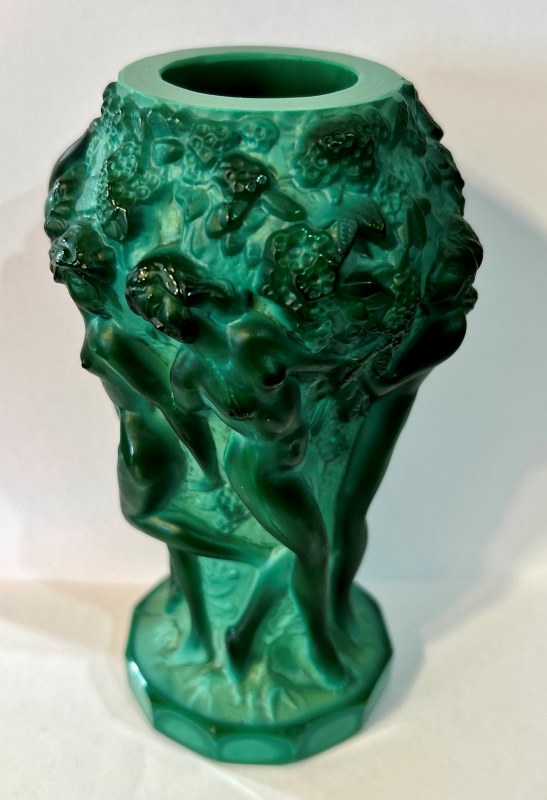Enchanted by gemstones, but are they both expensive and also really hard? Then you’re solving the same problem that was behind the creation of malachite glass.
Even in previous centuries, gemstones and minerals were popular, both in jewellery making and design. Thus, glassmaking experimented with both the clearness of the glass (as opposed to glass with unwanted impurities) for clarity in crystal, the coloration – whether it was the progressive gradation of color or the exoticism of uranium. But also the imitation of real stones, and so in the 19th century not only malachite glass was created, but also azure or coral glass on a similar basis.

Glass or precious metal?
Although imitation cut stone is one of the common decorations. When we talk about malachite glass it is always only glass. Otherwise, besides the price, the weight would also be a problem. Because malachite is a metal ore from which they make copper, with a high density. As a result, it’s quite heavy.
For the best possible imitation, glassmakers have come up with a technology to produce polished parts that imitate the cut of the precious metal. For authenticity, it was not only the kidney-shaped cut that were important, but also the non-uniformity of the colour, which gave the cut (apart from its beauty) the illusion of reality.
To this day, it’s not entirely certain exactly how malachite glass was made. We do know that the base was milk glass to which pigment was added. Glass with different pigments was probably then poured into the mould in several stages. As a result, the different layers and colours are then not only visible when polished. It was important that these layers were not uniform – each was a different thickness. Just as is the case with gems in nature.
This makes every piece of glass, like every piece of gemstone, an original.
The history of malachite glass
Although the first attempts began during the 19th century during the Historicism and Art Nouveau periods. The golden era of malachite glass came in the 1920s-1940s. Most typically in the Jablonec region in the company of Ingrid Curt Schlevogt and Heidrich Hoffmann.
The Ingrid company was a design studio that specialized in small decorative glass objects, so-called crystallerie. Which was exactly what malachite glass was used for.
The demanding production and this specialization of the company was probably one of the reasons why malachite glass is most typical for Jablonec and the Ingrid companies. Although this type of glass was experimented with elsewhere.
In later times, i.e. during communism, malachite glass was still produced. However, compared to the original malachite glass, there was a lack of attention to detail and texture.

In addition to the inconsistent mix of individual colours, moulds were often used in the production of malachite glass. However, due to the temperature of the glass, each time the mould is poured, the mould is destroyed. It has to be repaired, refinished or replaced. And every glassworks had an engraver who maintained the mould.
This was neglected during the communist period (quantity over quality) and the moulds became unusable or the details of the decoration were destroyed. Quality thus declined significantly. Although even in this period it is possible to find really high-quality pieces – for example, metallurgical glass, this was not the case with malachite glass.
Malachite glass, incidentally, is still produced in very limited quantities today. However, it is a question of whether it is cheaper to buy new or antique.
More about glass
Uranium glassware
Vintage metallurgical glass
The precisely engraved glass, the refraction of crystal glass, the timeless decors of art deco glass are amazing. But each of us at sometimes longs for an elegance that carries…
Forest glass
How to recognize antique glass
Did you find glass objects in your grandparents’ attic, did you get your hands on an object that you think might be old and valuable? Or are you playing with…









